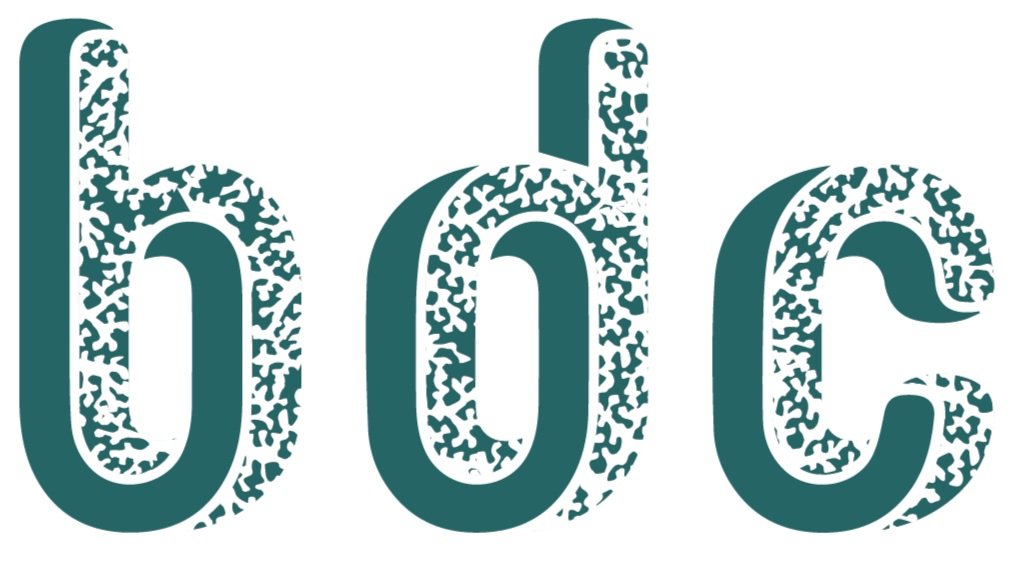Q&A with...
Grace Knight, Industrial Designer at Ecovative Design
BDC: What is mycelium, and what can it do as a material?
GK: Mycelium is a hyphal network underneath the forest soil. It is often regarded as nature’s internet because it allows the plants and mushrooms to communicate and even transfer nutrients. Mycelium can be grown to any geometry with little energy because it naturally self-assembles in a branching pattern at room temperature.
We use mycelium at Ecovative in three platforms— MycoComposite, MycoFlex, and Atlast.
MycoComposite is hemp bound by mycelium that makes a composite material useful for replacing styrofoam packaging. The market has grown and so we created Mushroom Packaging with the goal to license this technology to others to bring mushroom packaging to their local region.
MycoFlex is 100% pure mycelium foam which is grown aerially off the substrate within an environmentally controlled growth chamber. The materials are thermally insulating, rebounding, heat resistant, hydrophobic, and can be shaped with a table saw, laser cutter, die pressed, embossed, and even deli sliced.
Our current focus at Ecovative is in whole-cut, mycelium-based meat, which uses the growth chamber process. We are excited to say we have launched a separate company called Atlast Food Co. to partner with food companies and bring our whole-cuts to your dinner table.
BDC: As an Industrial biodesigner what kinds of new applications have you developed for it?
GK: On the Design and Marketing Team we brainstorm possibilities for the MycoFlex material by looking at the needs in various industries. Mycelium has specific attributes, like hydrophobicity and flame resistance, which lends it many applications.
My job has two parts—to visually convey concepts, and then to “make them real” with prototypes, documentation, graphics, and branding.
In beauty I’ve prototyped sheet masks, foundation wedges, compact sponges, face wipes, toe spacers, eye masks, and disposable salon flip-flops. In apparel I’ve prototyped shoe soles, handbag straps, glove liners, and backpack straps. After fabrication it’s important to document to generate imagery and keep those prototypes and the vision alive.
For the Atlast Food launch I branded the company, created the website, social channels, and booth display for the Good Food Conference.
BDC: Has working with a living material changed the way you think about our relationship with the living environment?
GK: I have always felt very connected to the living environment and see us as stewards of the Earth. Using a living material is no different from respecting the microorganisms that help us everyday, from the bacteria gut flora that aids our immune systems to the yeast in sourdough starter. Working with mycelium reiterates this fact. If the environmental conditions are ideal, the living material will be healthy and produce a strong product.
BDC: You are one of the few professionals in the world who create products from mycelium. How did you get the job?
GK: I believe it is the designer’s responsibility to design mindfully and sustainably, realizing the product’s purpose will eventually end. When studying Industrial Design I was conscious of my material choices with every project. I chose to use only recyclable materials, some favorites being wood and ceramics, and explored biomaterials, such as kombucha leather, and bioplastic. I had often used Ecovative’s GIY kits. In my mind, it didn’t make sense to use carcinogenic glues and plastic when I knew the project would be thrown out after the semester. I broke the rules, swapped out materials for ones that made sense given the short lifespan of the assignment.
Because of my undergraduate work with mycelium materials, Ecovative was on my radar and stood out as a company creating something entirely new. They happened to have a job opening for conveniently my exact skillset—design and fabrication.
BDC: Do you have any advice for BDC students who might want to follow your path?
GK: I encourage students to foster their curiosity and make every decision consciously towards their larger vision. The biotechnology and design space is small but rapidly growing, it’s important to be well-read in its history and advancements. Most importantly, get your hands dirty and start playing with biomaterials. If you design for nature, inspired by nature, you are designing for all.
Resources Recommended by Grace:
Mycelium Running, Paul Stamets
BioDesign, William Myers
David Moore’s World of Fungi
Fantastic Fungi Film
About Grace
Grace Knight is an artist, woodworker, and Industrial Designer at Ecovative Design. She holds a BFA from The Rhode Island School of Design in Industrial Design with a concentration in Nature, Culture, and Sustainability. She is driven to create positive change, reverse pollution, and synthesize materials by combining her love for both biology and design.
About Ecovative Design
Ecovative Design LLC is a mycelium Biotechnology company headquartered in Green Island, New York. Founded in 2007, the company devotes its research and development to understanding mycelium for use as a biomaterial, and contributing findings to the field of mycology. The mycelium materials have been used in apparel, skincare, furniture, building materials, and packaging as a plastic and polystyrene alternative with the objective to reduce pollution.


